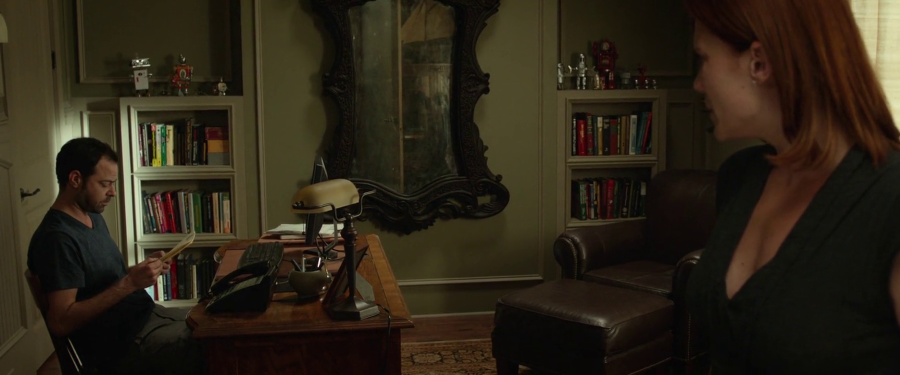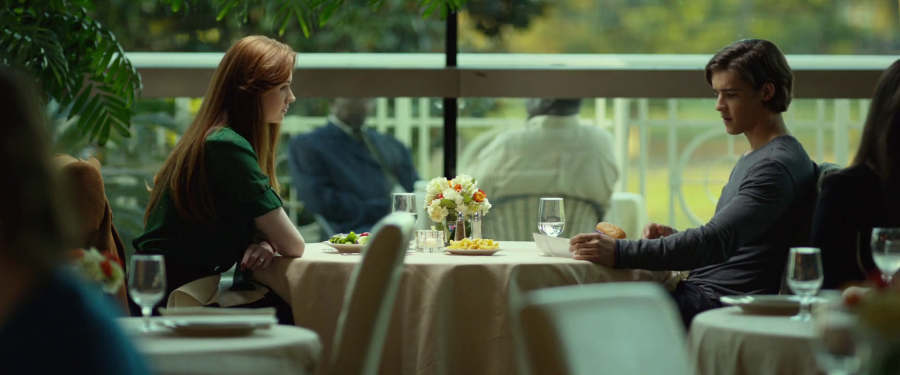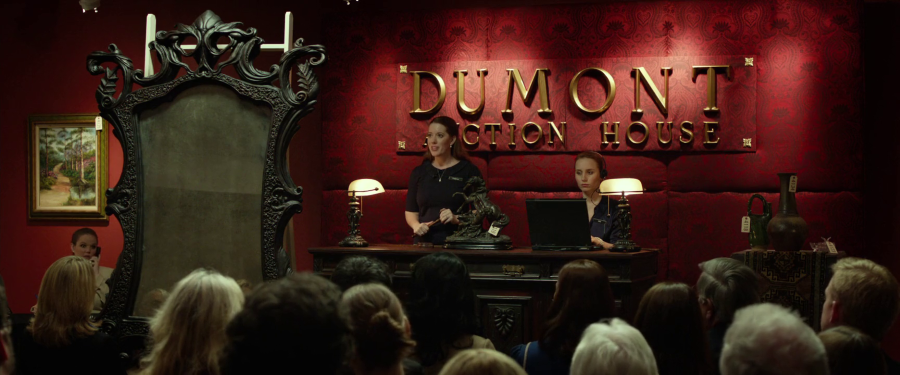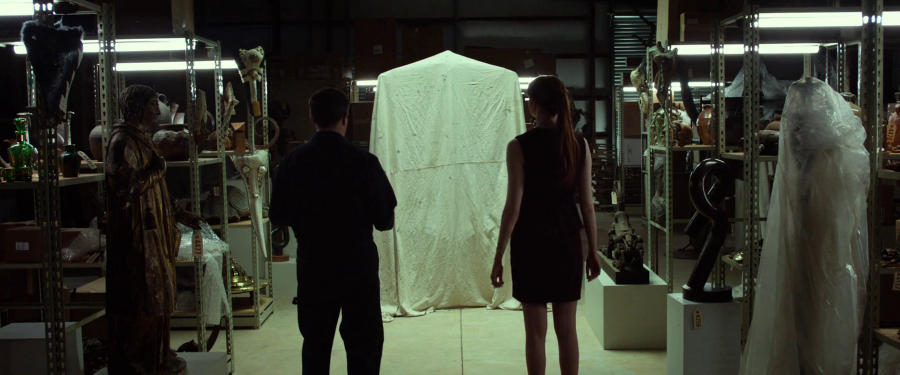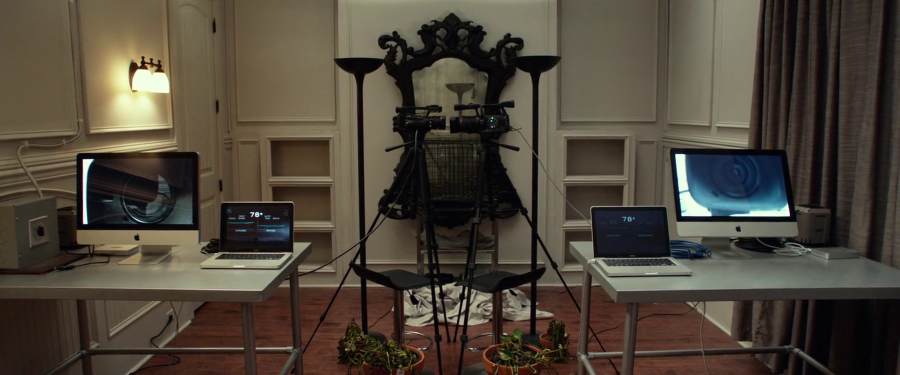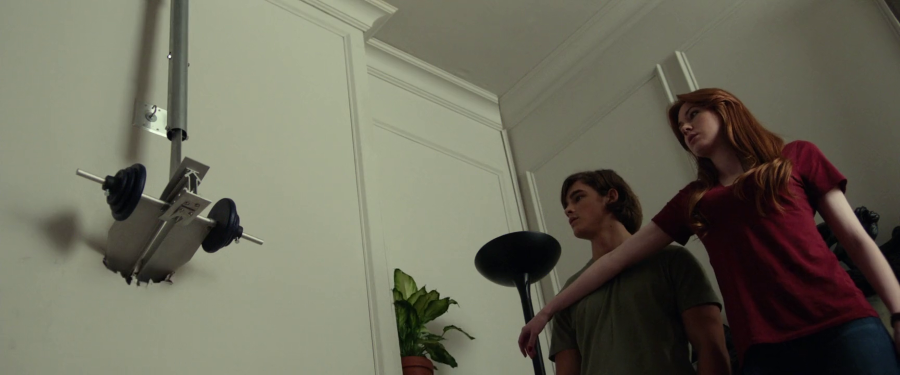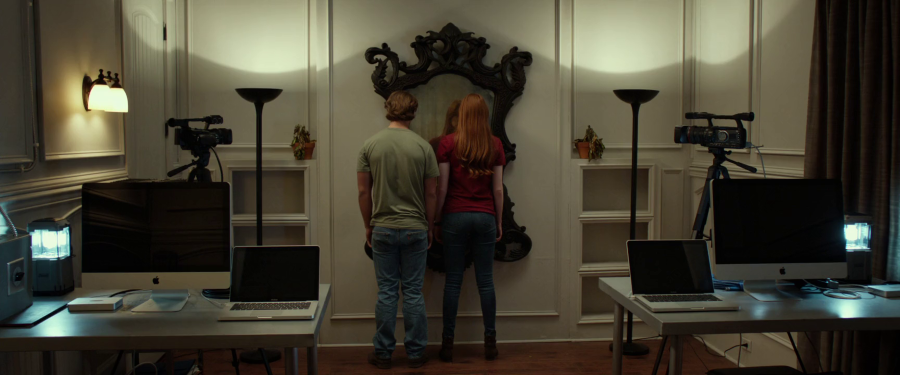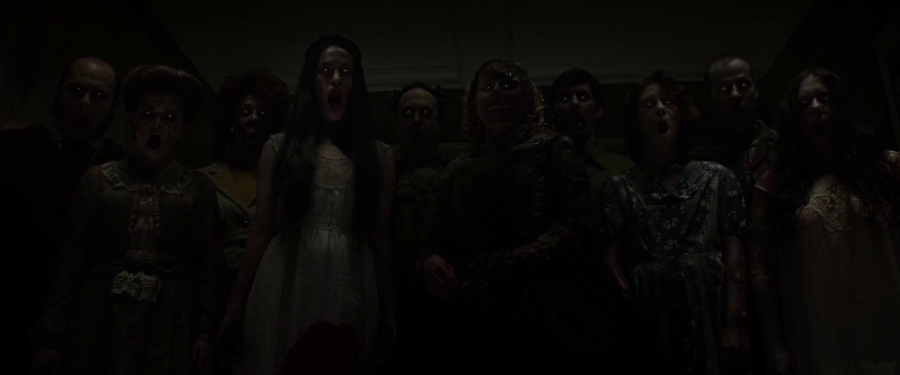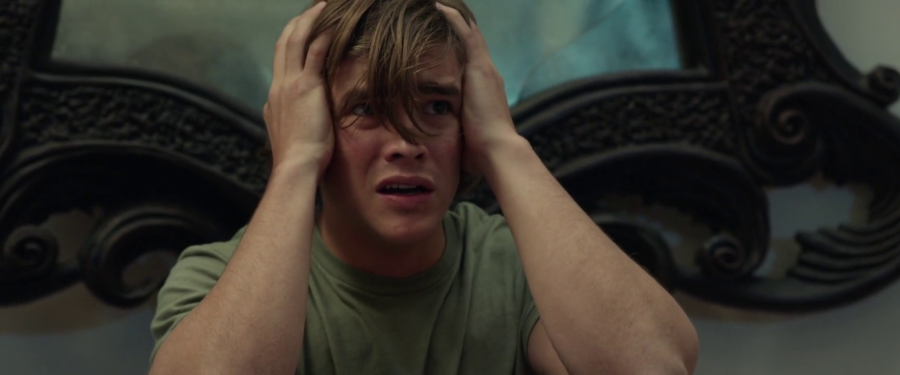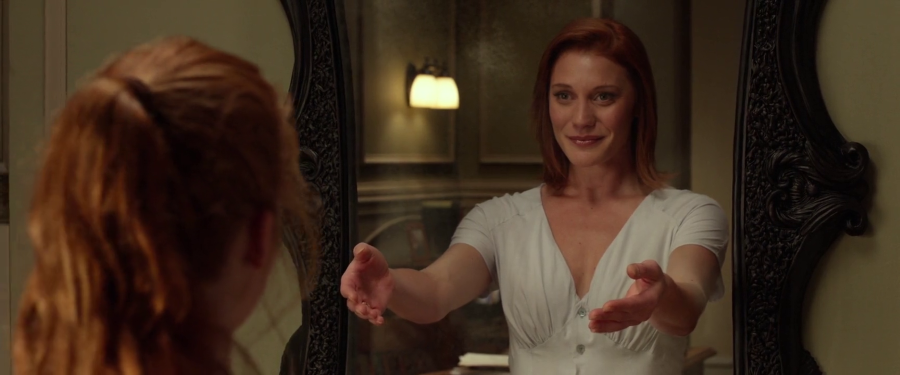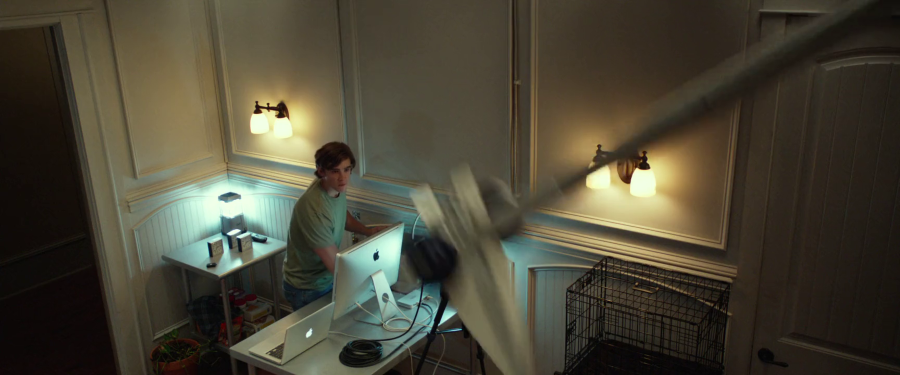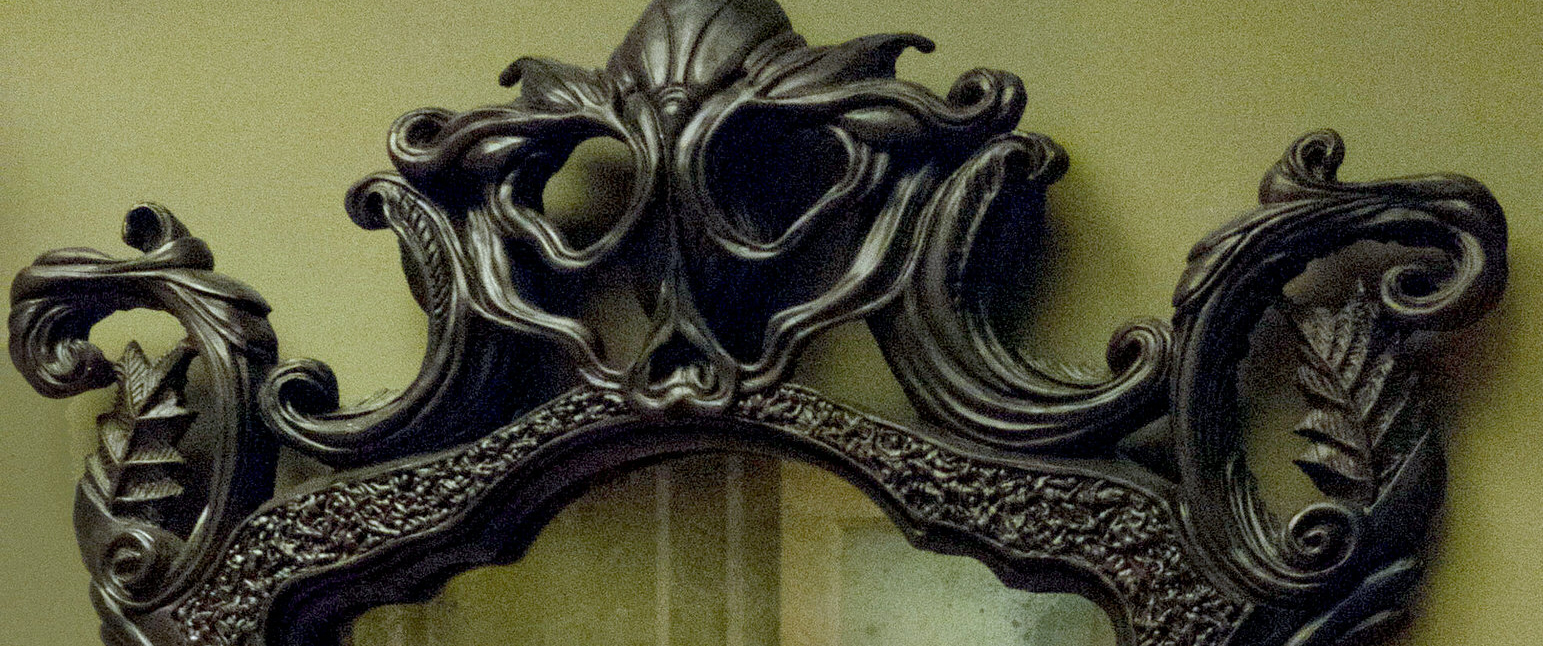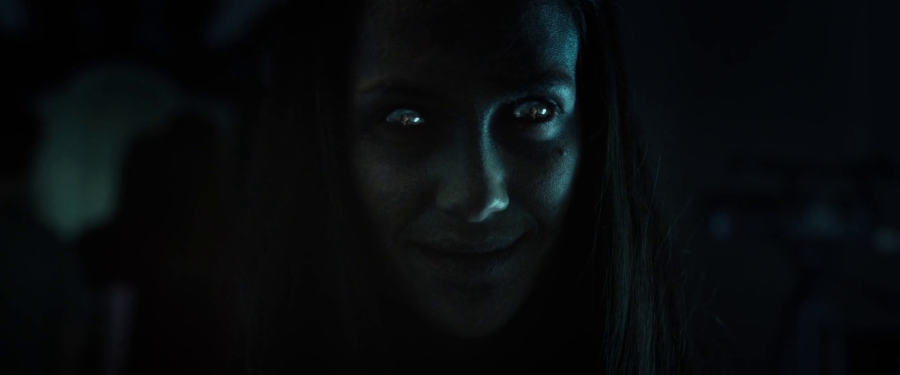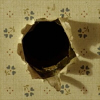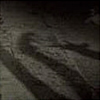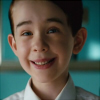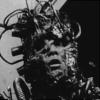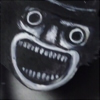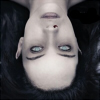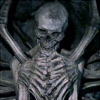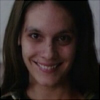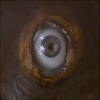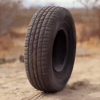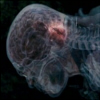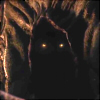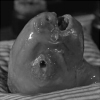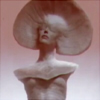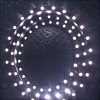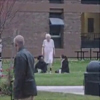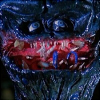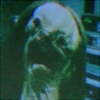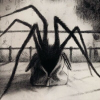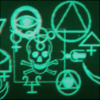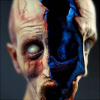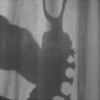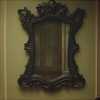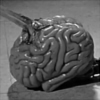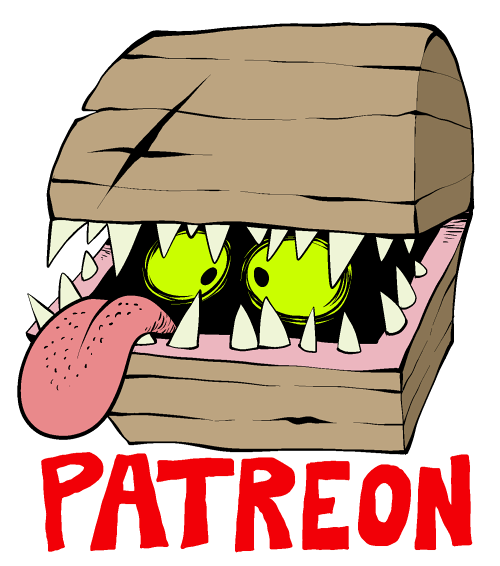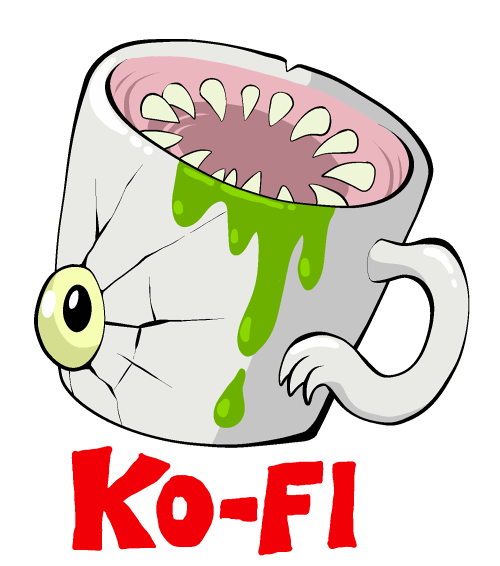By Jonathan Wojcik
ENTRY 26: OCULUS
The story also interweaves two plotlines: one that took place in the year 2002, and one in the "present" time of 2013. The events from 2002 are interspersed throughout the entire movie, but rather than jump wildly back and forth for this review summary, I'm going to compile most of the 2002 story first, which is what other reviews and wiki entries opt for.
While these hallucinations continue to escalate, Alan spends more time alone in his office and becomes increasingly hostile towards his own family. Marie grows paranoid that he's having an affair, especially once the children are able to see the "strange woman," and as her trust in her husband deteriorates, she hallucinates that her actual body is deteriorating with it, her flesh appearing to rot when she sees her own reflection.
Eventually, Alan seems possessed by a directive to free Marie and assist her in killing their son and daughter. Alan ends up shooting Marie while she's attempting to strangle Kaylie, but then tries to strangle the little girl himself, until Tim gets ahold of his father's gun. Alan seems to snap out of his murderous trance, but takes his son's hand, gun and all, and forces the boy to shoot, framing a ten year old for the murder of both parents. No one believes either child's story, with Tim spending the next decade in counceling while Kaylie is raised to adulthood by a foster family.
When he runites with Kaylie however, he discovers that she's spent years working at an auction house for the sole purpose of intercepting the mirror. Whereas Tim has moved on, she has dedicated her life to proving that neither her brother nor her parents were to blame for the violent tragedy. She intends to not only expose the anomalous nature of the mirror to the world but contain, neutralize or destroy it once and for all. Over years of research, she has identified it as an artifact of unknown origin, the Lasser Glass, that has passed through more than 45 known owners...every one of them meeting a hideous, inexplicable end, several of which she shares as examples.
The original owner, Philip Lasser, hung the mirror over his fireplace in 1754, and was subsequently found sitting in front of the fireplace completely burned to death. In 1864, a railroad tycoon weighing 300 pounds was found emaciated and starved to death in his ballroom only weeks after acquiring the mirror. In 1904 a woman hung it in her bathroom, and was found dead from dehydration in a tub still full of water. A 1943 owner drowned her own children then bludgeoned herself with a hammer enough times to break most of her own bones before finally dying. A 1955 owner starved to death in his bedroom, a 1965 bank teller chewed through an electrical cable, a teacher in 1971 walked outside and into traffic immediately after seeing his own reflection, and a woman in 1975 died of blood loss from a miscarriage, during which she inexplicably pulled all of her own teeth out and put them neatly in a plastic bag.
Throughout these incidents, any pet dogs present tend to vanish without a trace, and all live plants in the same building are always found completely wilted.
It goes without saying that none of this information does anything to convince Tim that any of this is a good idea to mess around with, but Kaylie has a system, and this is the next most interesting thing about Oculus after its inanimate villain:
In possibly the second worst incident, Kaylie takes a snack break and obliviously bites into a fresh, juicy glass lightbulb. In the first worst, she mistakes her visiting fiancee for the glassy-eyed ghostly woman she saw eleven year prior and kills him, or so she thinks, or maybe she did? When the corpse appears to be gone, just another illusion, she is able to see it through the camera of her cellular phone. One would hope she's wrong that cameras always show the truth, but if Lasser can change digital film, they're even more screwed than they ever might have suspected.
Nothing unexplainable or paranormal ever would have really been captured on camera; only two siblings acting bizarre and erratic until one of them murders the other with her own absurd invention, proving nothing in the eyes of the law except that the two were terribly, terribly unwell and that releasing Tim was a mistake.
MONSTER ANALYSIS: THE LASSER GLASS
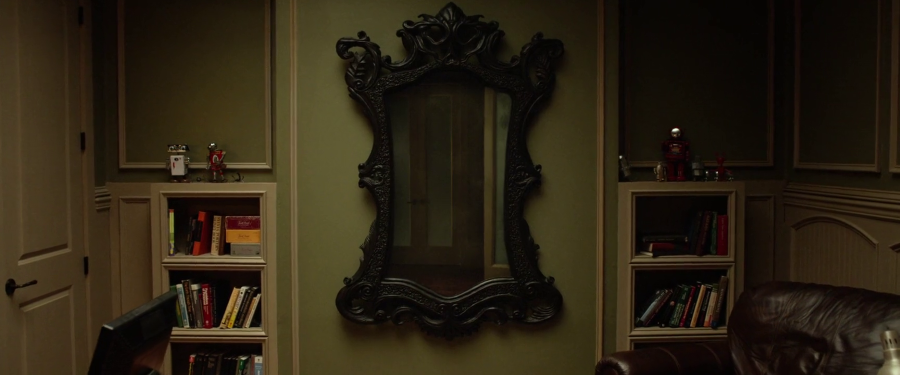
Oh my god, this nasty ass BITCH. This absolute MOTHERFUCKER. I despise that ending every bit as much as I love why I despise it. Sometimes it's the sign of a good movie if it can piss you off, and especially if it can make you angry at a piece of glass. Some reviews interpret this unapologetic douchegargler as "haunted" in the traditional sense, that it is the vessel for a collective of vengeful human souls, but I get a clear impression that it's the other way around; that the "souls" are "possessed" by the mirror, and that's precisely how the director has framed it. I mean literally framed it! You have to squint to see it, but the fine, pebbly texture of the mirror's inner frame is sculpted as hundreds of thousands of teeny, tiny, tangled human bodies, while the leafy outer frame deliberately suggests a vast, inhuman monstrosity coveting them all. Flanagan even requested that the frame have its own weird, alien face at the top!
Did you spot it? Did you see its little face?? It's so good, it's like some mournful, buggy eyed deep sea fish, or maybe a cross between a membranous amphibian and an insect. It even has a certain pitiful quality to it not unlike our own Magboils.
I find that the careful plotting of the mirror's actions throughout Oculus, the creative improvisation and the deeply personalized cruelty pretty clearly suggest a single sentient force with its own distinct, consistent personality, and it's a deliciously despicable one...no matter how pettable its little facey wacey.
The hateful hunk of junk doesn't care who you are, why you brought it into your life or even how lovingly you might admire and cherish it as a priceless treasure; it hates, HATES, GOD DAMNED HATES humans, period. Evil humans, good humans, old humans, little baby humans, this big shiny dickhole just wants nothing more than to watch all of them squirm under its psychic torture until they die hideously, and it's impossible to judge whether it's feeling pure rage and bitterness all the while or it's having the time of its life when it gets to watch another innocent family massacre each other for its depraved entertainment.
Or, you know, it just doesn't "feel" anything at all by our standards, but a colder and more alien malevolence we can never begin to define, with Flanagan cryptically suggesting that the mirror is merely how we interpret the "eye" of something looking into our world. Something he's only described as an ambiguous sort of "anti-god."
The thing is, this is not a movie that's supposed to have a good ending, or even an ambiguous "they got away for now" kind of ending, because the star of the whole movie really is the fact that this mundane household object is also an infuriatingly unbeatable mary sue of a nemesis, one that could make the edgiest Joker from the darkest Gotham say "holy shit, lighten up already;" a gargantuan flaming turd of a villain that smugly does what it wants and always gets away with it. When this kind of character is human, even "close enough" to human, they can easily be insufferable enough to sour the entertainment value of their own narrative, but like...an "item?" Just a stupid thingy you might find at a garage sale? That's our invincibly overpowered, shockingly deranged bad guy? It's too weird, too impenetrably "other" to be repulsed by in quite the same way as someone who squanders their more recognizably human life by spreading misery. Whatever reason this nasty, wretched thing exists and whatever reason it does what it does, it feels doubtful that its mind can run on any logic close enough to our own to be reasoned with.
It's AWFUL. It's possibly more awful than any single creature or character from any other movie in these reviews, barring an upcoming entry that could practically be its big brother, but Oculus is a rude mirror's movie, not any human's movie. As upsetting as the ending is for our protagonists, it's hard not to be entertained on at least some level by the senseless depths of petty contempt on display from Lasser Glass, like a sneering heel wrestler that thrives on a booing crowd. Kaylie and Tim, unfortunately, are just the latest in a long line of opponents this arrogant bastard wailed over the head with its cosmic folding chair, and the harder you hate it, the harder it probably gets off on it (in whatever sense that means for a piece of metal and wood.)
The gaping glasshole is at least stuck (as far as we know) as a lousy mirror bouncing between dusty thrift stores, but even if it could choose to be anything else, it might only choose to be a giant middle finger.
One of the most interesting things about this movie, however, is that its official title isn't actually "Oculus" at all, but Oculus 3. The intention was, apparently, to begin an anthology horror series that would release "out of order," with a whopping total of nine different stories that may not all focus directly on the mirror, but all tie together in some way, at some point. Might it still happen? I'd at least enjoy seeing either prequel or sequel, but sequel would perhaps be a little more fun...then we really could see how Lassie fares against a decade or so of technological innovation. Nobody, as of Kaylie's experiments, ever did try to expose Lassie on social media, as far as we're aware.
It wouldn't turn out to...nahh, come on....still work through the internet, would it? Do you think?


